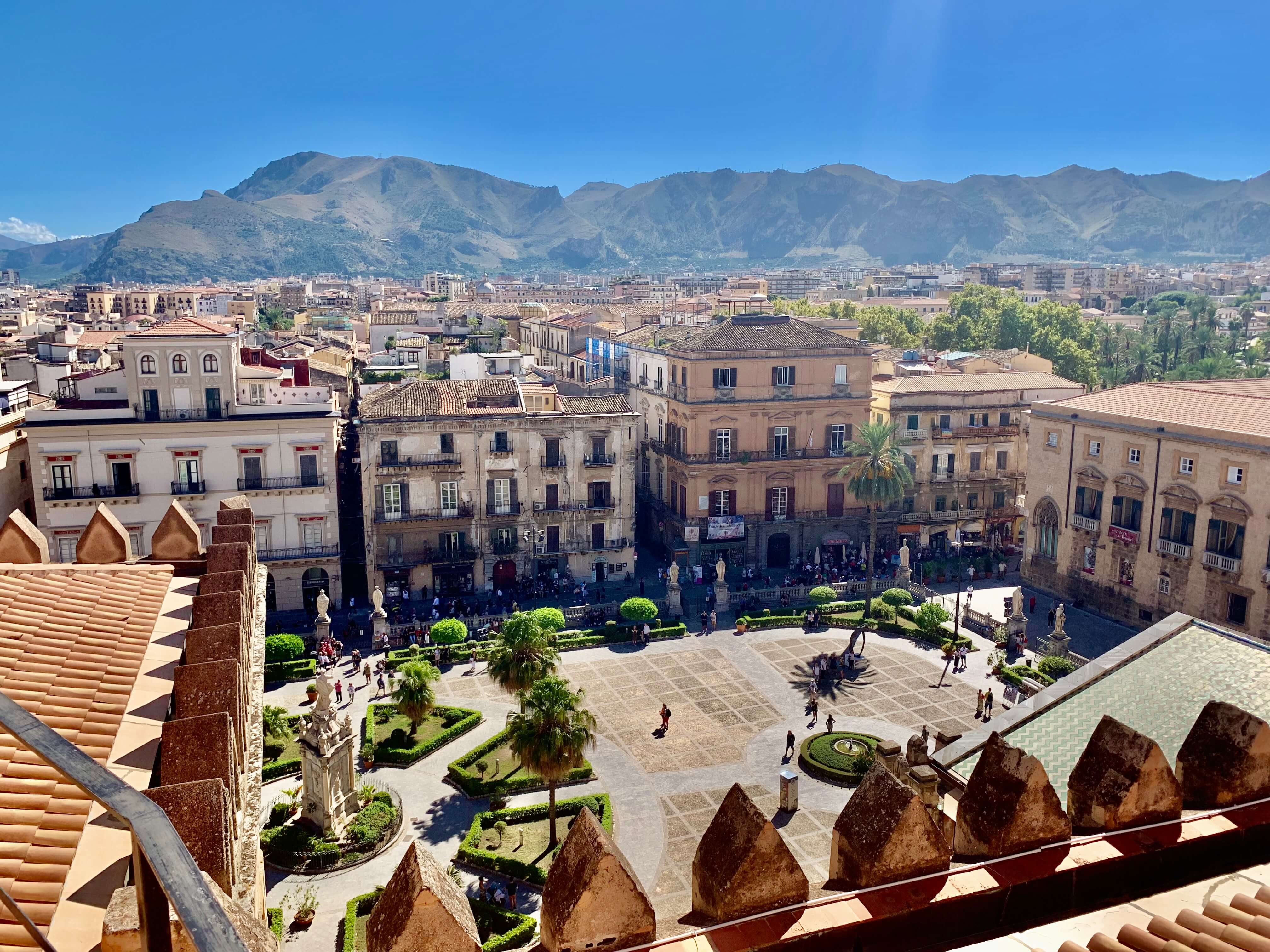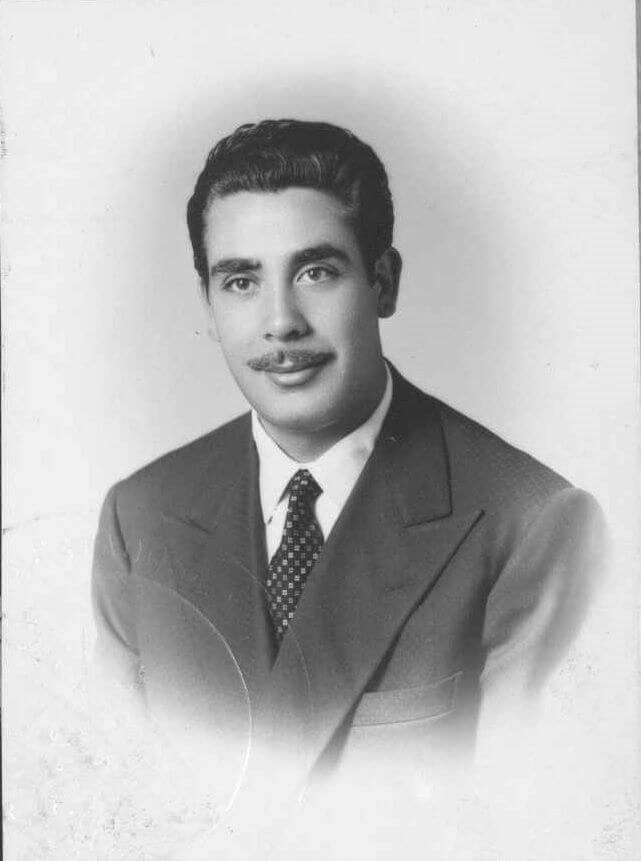- Home
- Things to Do in Sicily
- Godfather Locations
Michael Corleone in Sicily: Exploring the Iconic Godfather Filming Locations
Before we start our journey with Michael Corleone in Sicily, let's take a look at this fictional characters epic journey.
The Godfather was originally a book by Mario Puzo. The book was a bestseller, but the story only became a true classic after Francis Ford Coppola made it into a film.
Godfather movies are cinematic masterpieces. They tell the story of the Corleone family. The word 'mafia' is never mentioned in the first movie - and neither is Cosa Nostra - and it doesn't have to. Partly this was because Coppola wanted to make a movie as much - if not more - about America than Mafia.
The Corleone family saga begins with the wedding. Vito Corleone (Marlon Brando) is the family's patriarch, and his daughter is getting married.
Vito's son, Michael (Al Pacino), and his American girlfriend, Kay (Diane Keaton), are among the guests. Michael has distanced himself from the family. He is an outsider among the guests.
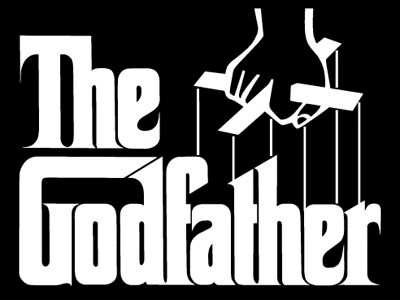
The Godfather movies follow Michael's guest as he gradually returns to his roots, to the family "business." Michael aims to clean up the business from illegal elements, but breaking away from tradition turns out to be next to impossible.
As things start to escalate, we find Michael Corleone in Sicily, his family's birthplace. He has fled there to escape the Mafia war. There he starts to bond with the old family traditions.
The second part of the saga tells the story of Michael's father, Vito Corleone's, journey to America. He, too, has set out to escape the power of the Mafia. Ironically, he becomes a Mafia boss in the place of his escape: United States.
The third part becomes a bloody spectacle as the trilogy approaches its tragic end. Director Francis Ford Coppola says he did it purely for the money. It was as if he were caught up in the capitalist web that he was trying to criticize in the films.
The Mafia is, after all, just unhinged capitalism.
Some of the most impressive scenes in the Godfather trilogy are set in Sicily, the birthplace of the Corleone family. Here, on this page about Michael Corleone in Sicily, we delve into these iconic filming locations.
The Dramatic Landscapes of Sicily: A Perfect Backdrop for the Godfather Movies
Sicily, the sun-drenched island off the southern coast of Italy, has long been a captivating destination for filmmakers. Classics such as Cinema Paradiso (1988), The Leopard (1963), and Il Postino (1994) were filmed on the island.
Sicily's rugged landscapes have inspired poets and storytellers since ancient times. They offer the perfect conditions for an epic saga of violence and family relations, like the Godfather trilogy.
So, let's step out of the silver screen and immerse ourselves in the locations where these memorable scenes were captured. These picturesque landscapes have become inextricably linked to the Corleone family's story.
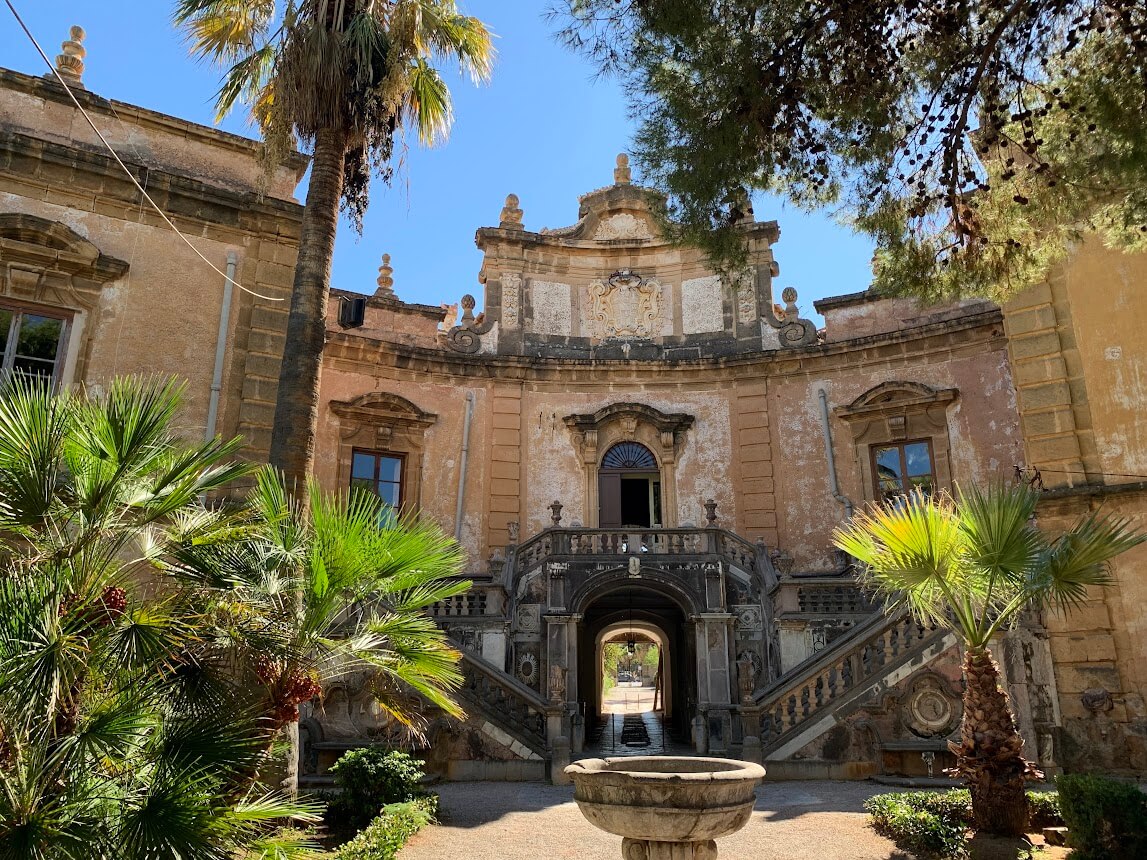 Cinema Paradiso was filmed in Bagheria, in "The City of Villas." The picture shows Villa Palagonia in Bagheria. In front of this building, the Corleonean bandit Salvatore Giuliano was killed. The Godfather's author, Mario Puzo, turned his story into a novel called The Sicilian.
Cinema Paradiso was filmed in Bagheria, in "The City of Villas." The picture shows Villa Palagonia in Bagheria. In front of this building, the Corleonean bandit Salvatore Giuliano was killed. The Godfather's author, Mario Puzo, turned his story into a novel called The Sicilian.Corleone: Exploring the Birthplace of the Family
First, a word about the actual Corleone. It has become known in real life as the cradle of the Mafia. But this really only happened after the first Godfather film. Before that, it was just another town with their own mafiosos.
The Godfather film was like a bizarre prequel to what happened in Sicily during the 1970s, leading in the 1980s to the bloodiest mafia war in the its history. Except that in real life everything was much more depressing, and not at all glorious.
Luciano Leggio and his sidekick 'Toto' Riina were responsible for the rise of the Corleoneans as one of the most brutal mafias in history.
Together, they escalated the internal struggle within the Cosa Nostra to such a degree that, eventually, the mafiosos turned against their organization. The Omerta code was broken. The end came in the form of 'maxi trial' that made Judge Giovanne Falcone the legend he is today.
In the Godfather films, the town of Corleone is the hometown of Michael's father, Vito. Marlon Brando portrayed him in the first movie and Robert de Niro in the second.
At one time, Corleone was known in Sicily as "The Tombstone"—and for good reasons. The whole town lived under the dark laws of the Mafia and the culture of silence that grew out of them.
Today, Corleone is safe to visit. The town may still not be a joyous sight - buried amidst the mountains - but it's not particularly dangerous either. Nor are there any tourist attractions. There used to be a small museum on the history of the Mafia, but the last I heard it was closed.
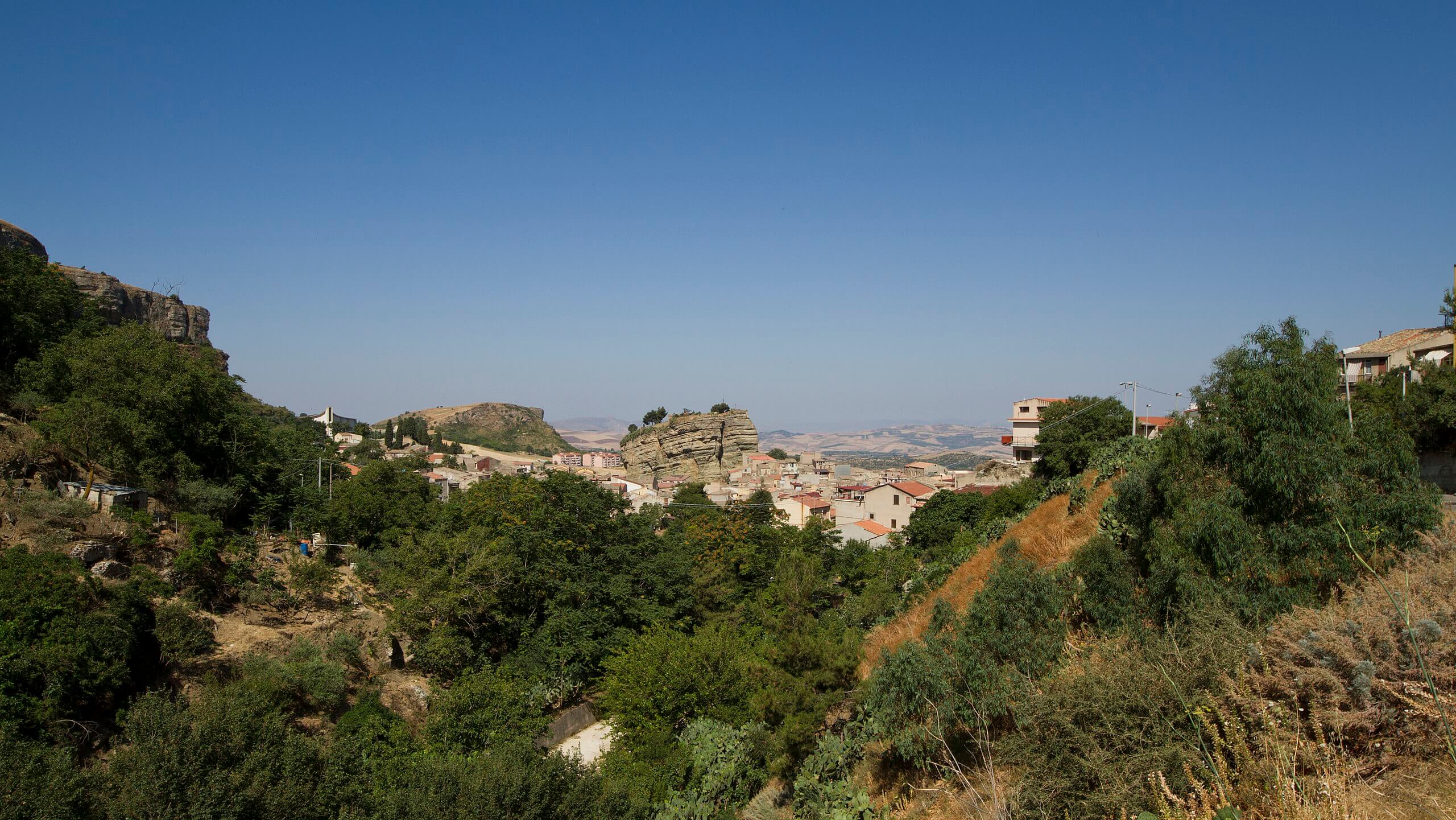 Hills surround the town of Corleone. They have provided perfect hiding places for the mafia and other bandits throughout the ages. (trolvag / Wikimedia Commons)
Hills surround the town of Corleone. They have provided perfect hiding places for the mafia and other bandits throughout the ages. (trolvag / Wikimedia Commons)Sant'Alessio: The "Corleone" of Godfather Movies
In the first part of the Godfather trilogy, we see Al Pacino's Michael Corleone in Sicily. He walks in the hills with his two bodyguards. They see a town in the distance, one man points to it, and says: "Corleone." In reality, the place is Sant'Alessio, right next to Forza d'Agro.
Why not use the real Corleone? The real Corleone had become too modern for director Francis Ford Coppola.
Sant'Alessio was also used in the other parts of the trilogy to represent the birthplace of the family patriarch, Vito Corleone.
The funeral march scene at the beginning of the second part is also filmed in front of Sant'Alessio. The scene is interrupted by gunshots, which result in Vito's brother being found dead.
Vito's father has defied a local mafia boss and has been killed as a result. Now, the same fate awaits his sons. That's why young Vito must flee to America.
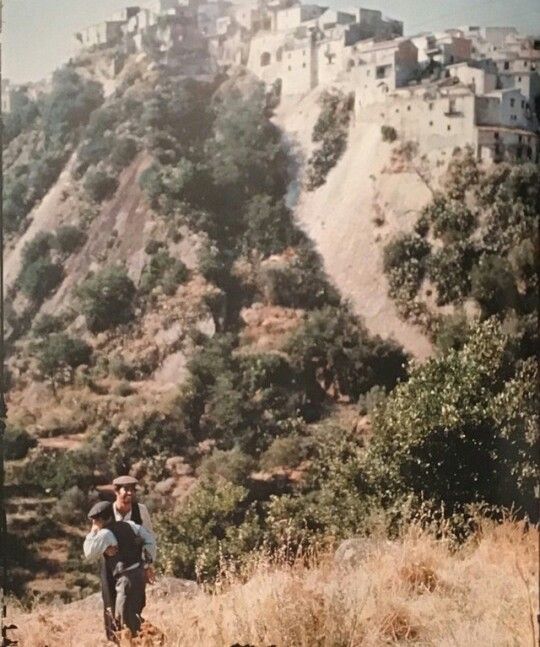 Michael Corleone in Sicily. Sant'Alessio plays the role of Corleone in the background.
Michael Corleone in Sicily. Sant'Alessio plays the role of Corleone in the background.Savoca: Discovering the Stunning Backdrop of the Wedding Scene
As we journey deeper into the odyssey of Michael Corleone in Sicily, we arrive at the picturesque town of Savoca, where one of the film's iconic scenes was captured.
The backdrop of Savoca's historic center and its views of the Ionian Sea served as the setting for Michael Corleone and Apollonia Vitelli's lavish wedding.
The event symbolized a turning point in Michael's thinking. Previously, he saw himself primarily as an American. Now, he is beginning to turn to his father's traditions—for better or worse.
Savoca is a small town just north of Taormina. This makes it an ideal day trip destination for those holidaying on the region's famous beaches.
The wedding scene was filmed at the Chiesa di San Nicolo. It's a steep climb uphill but well worth the effort.
Savoca is a very traditional Sicilian town, so it was chosen for the film. Like other small Sicilian towns, it has good food and drink and a traditional atmosphere.
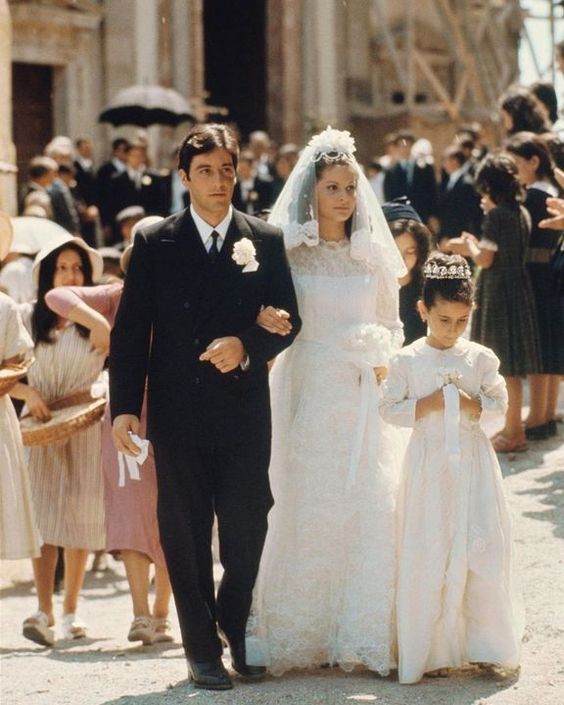 After leaving America behind, Michael Corleone finds new love in his family's native Sicily.
After leaving America behind, Michael Corleone finds new love in his family's native Sicily.Love Under Harsh Conditions: Bar Vitelli
Bar Vitelli is also in Savoca. It is a humble establishment that played a pivotal role in the story of Michael Corleone's transformation.
The bar serves as the setting for a scene in which Michael first meets Apollonia and begins his journey deeper into Sicilian culture.
While visiting Bar Vitelli, travelers can also stroll through the town's historic center and soak in the serene atmosphere that has remained more or less unchanged since the film's production.
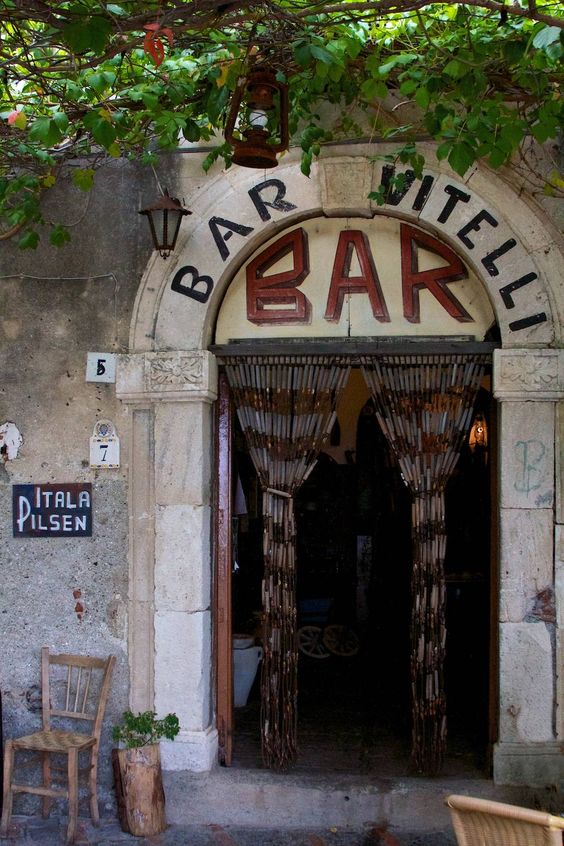
Forza d'Agrò: Where It All Begins - Including the End
Forza d'Agro is also a small hilltop town also near Taormina. You get there by driving up a winding road from the coast of the Ionian Sea. Much of the town is made up of cobbled alleys inaccessible by car.
The church of Forza d'Argo also appears in Godfather movies. In Godfather II, young Vito departs from its shelter in a donkey-drawn carriage on his journey to America.
The church appears again later in the movie when the grown-up Vito Corleone returns to Sicily to avenge his father's murder. Before returning to America, he visits the church.
In Godfather III, Michael Corleone returns to Sicily with his wife, Kay (Diane Keaton). On their way, they see a wedding party in this same church.
Afterward, they drift to the Forza d'Agro's main piazza to celebrate and watch a puppet show with the wedding party.
The church in question is called the Church of Santa Maria Assunta. It can be easily found by following the "Duomo" signs. There are three other churches in the town. Of them, the Church of Holy Trinity is particularly worth a visit.
At the top of the hill are the ruins of the Norman castle. On the way to the castle, you can stop at a small piazza, where you will find the bicycle used in Godfather III. The priest drove the bike in the film and threw the wedding bouquet to Michael's wife, Kay.
While at the main piazza, you can also enjoy the refreshments in a Godfather-themed restaurant, Il Padrino.
Palermo: The Vibrant City That Served as a Backdrop for the Tragic Ending
Palermo is the lively capital of Sicily. For sightseeing, there's little on the island to rival it.
In The Godfather III, Palermo's opera house, Teatro Massimo, is the backdrop for the bloodshed that ends the saga.
The theatre's surroundings are an excellent place to hang out. After photographing yourself in front of the recognizable façade of this legendary building, you can take a guided tour to see the place from the inside. The other option to get inside is booking a concert ticket.
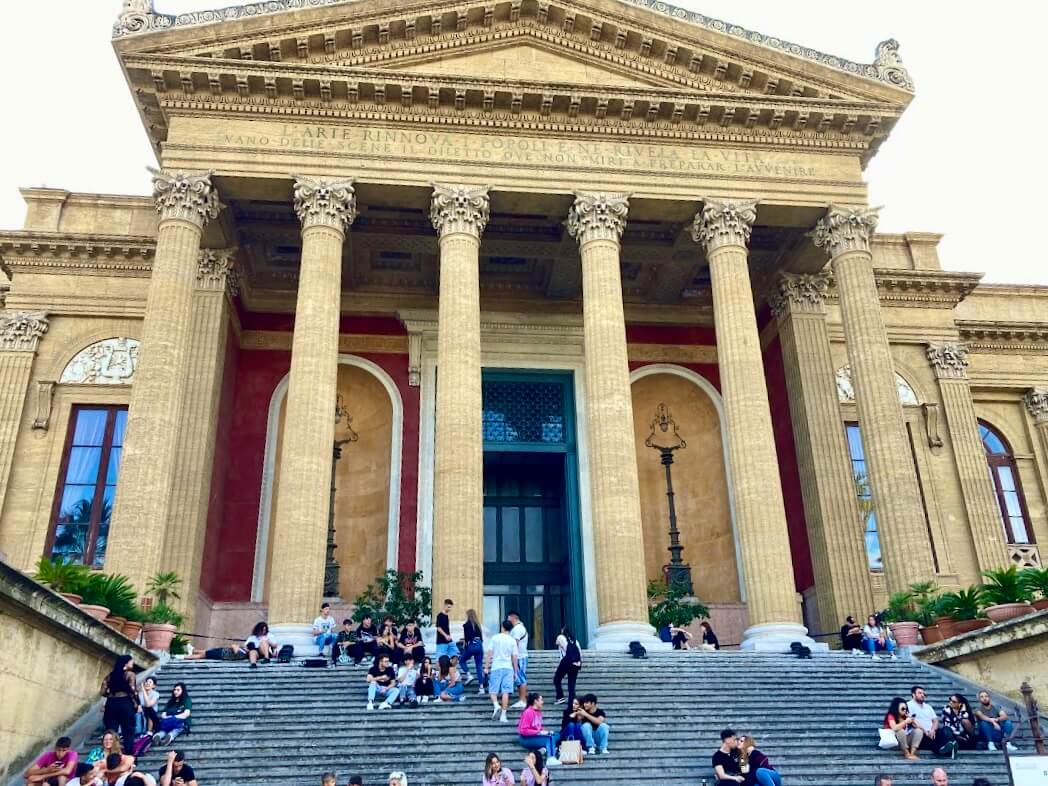 Teatro Massimo in Palermo.
Teatro Massimo in Palermo.Conclusion: Michael Corleone in Sicily - The Godfather Locations
The Godfather's legacy as one of the greatest cinematic masterpieces ever is undeniable.
The film's iconic scenes and characters have become inextricably linked to Sicily. From the charming streets of Savoca to the Palermo opera house, each destination offers a unique opportunity to step into the world of the Corleone family.
The real Corleone hasn't much to do with the films, although it too has played its part in the island's history of organized crime.
Related:
Cosa Nostra by Giovanni Falcone
Luciano Leggio and the Rise of Corleone's Mafia
Mafia Movies and the American Dream
(Last edited: March 15, 2025)
Recent Articles
-
Sicilian Food - Rich Flavors, Endless Passion
Apr 09, 25 09:54 AM
All you need to know about Sicilian food, its ingredients and history. -
Things to Do in Palermo - Tips for a Perfect Holiday
Apr 05, 25 04:27 AM
Things to Do in Palermo - From historic landmarks to delicious food, this guide has it all. -
The Story of Tommaso Buscetta: From Mafia Boss to Key Witness
Mar 30, 25 05:12 AM
Tommaso Buscetta built Sicilian Mafia into a global empire - which he then destroyed.
Follow MANY FACES OF SICILY on Facebook, Instagram, Bluesky & Pinterest
Contact: vesa@manyfacesofsicily.com

